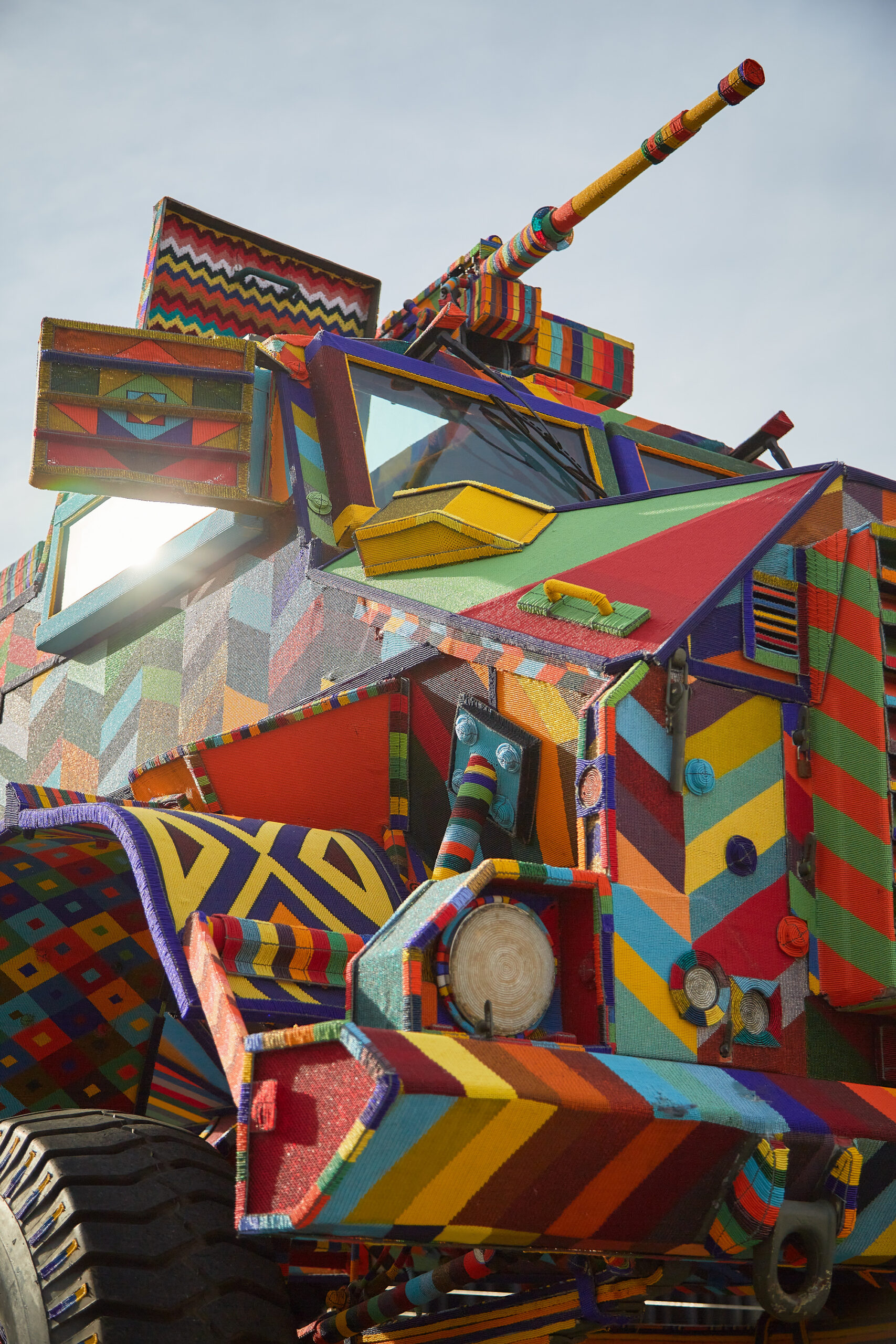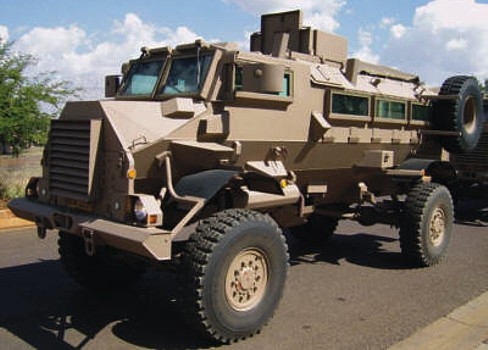The Casspir Project charts the locus of the South African military vehicle’s legacy of institutional oppression — a legacy with which we are still reckoning. The central element of the project is one of reclamation.
The central element of the project is one of reclamation. The restored and refitted Casspir vehicle, its surfaces fully covered in elaborate, brightly-colored panels of glass beadwork, arrayed in traditional patterns was completed by artisans from Zimbabwe and the Mpumalanga province of South Africa, including women of the Ndebele tribe, known for their craftsmanship.
Since it’s debut SPOEK 1 has travelled throughout South Africa, stopping at The Turbine Art Fair, Johannesburg (July 2017); Everard Read Gallery — Keys Art Mile, Johannesburg (July 2017); and The Melrose Gallery, Johannesburg (September 2017). The vehicle arrived in the United States in May this year and was part of Special Projects at the fourth edition of 1-54 New York and, most recently, was on view at Pioneer Works, New York through the summer.
I remember columns of Casspirs, ten or fifteen, heading for the East Rand Townships of Daveyton and Katlehong,” Ziman says. “Heavily armed paramilitary police sitting casually on the roofs brandishing automatic weapons. I remember Casspirs flying at high speeds down the narrow, potholed streets of Soweto. I remember how the South African police would park two Casspirs in the road to form a blockade, forcing drivers to slow into an S-shaped route for tense inspection.
CASSPIR
THE VEHICLE

HISTORY

Casspir is an anagram of the acronyms SAP (South African Police) and CSIR (Council for Scientific and Industrial Research). Designed in South Africa in the late 1970s and brought into service in the early 80s, the Casspir was used extensively by the Apartheid-era South African Police, as well as by the South African Defense Force. Bulletproof and mine resistant, the Casspir was a military vehicle, extensively used in urban, township areas in South Africa against civilian populations. By the mid 1980s, the Casspir was the ubiquitous heavy hand of apartheid oppression in South African townships – its mere presence a form of terror.
Post-Apartheid, Casspirs were decommissioned in South Africa, their hulls left to rust, a relic of the past better forgotten. Except for the ones that were sold to the United States during the Iraq war years, and later, to local police forces. In the age of Ferguson and Black Lives Matter, the Casspir has returned—a poltergeist from the past, one which continues to haunt us. The issue of over militarized police departments, which have purchased superfluous war equipment like one would buy worn LPs at a tag sale, has come to the forefront of the American debate on police tactics and aggression.
Anyone who has spent time in South Africa in the 1980s shares some history with the Casspir; it is as familiar as the smell of tear gas and burning tires.
TOUR SPOEK 1
Take a drone fly-over of the Casspir vehicle Spoek 1. Browse galleries that include the process of creating patterned beadwork, both inside and out.